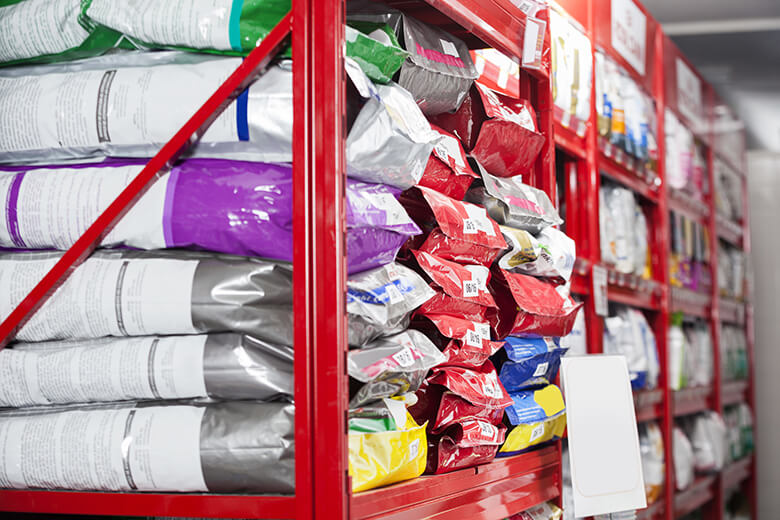What is the 25 rule for dog food

Four Naming Rules That Can Help Reveal a Dog Foods True Meat Content
Without rules any product with just a tiny amount of beef in it could be unfairly called Beef Dog Food.
So, the Food and Drug Administration has established four basic rules to standardize the process of naming a dog food. You can use them to help reveal a products true meat content. They are
- The 95% Rule
- The 25% Dinner Rule
- The 3% With Rule
- The Flavor Rule
The 95% Rule
The first rule requires that at least 95% of a products pre-cooking weight must come from the named animal source.
For example, in order for any product to be called Chicken for Dogs at least 95% of its ingredients must come from chicken.
And thats before its cooked not counting any added water.
OK, so how does the 95% Rule deal with a product made with two meat ingredients say beef and liver?
Well, to answer that question, you must first understand how the agency looks at lists. The FDA always requires that whenever a product lists its ingredients all must be listed in order of their pre-cooking weight.
And that same rule also applies to a products name.
So, when the name of a dog food includes two (or more) animal ingredients, the predominant one must be named first. And together they must make-up at least 95% of the product.
For example, when you see the name Beef and Liver Dog Food you know the two named meats (beef and liver) total at least 95% of the product and you know beef is the predominant ingredient not liver.
Now, one more thing When one of the two components happens to be a non-animal ingredient (like a grain or a vegetable) it cannot be used to meet the 95% requirement.
In other words, Lamb and Rice Dog Food must contain at least 95% lamb.
By the way, nearly all 95% Rule dog foods are canned products.
The 25% Dinner Rule
Now, if the named ingredients make up at least 25% of the product (not counting added water) but less than 95% the 25% Dinner Rule applies.
To qualify for the 25% Rule a descriptive term must be included in the name. These so-called descriptors consist of words like
- Dinner
- Nuggets
- Formula
For example, if you see a name like Salmon Formula for Dogs you know that at least one fourth of the product comes from salmon.
But watch out Since a name like Beef Dinner for Dogs only requires that a fourth of the product be beef, the meat component may actually occupy the third or fourth position on the ingredients list.
And that means the first ingredient (the main one) can sometimes be one you dont really want.
Lets say corn happens to be the first ingredient on the list. And what if your dog was allergic to corn?
Well, the name Beef Dinner for Dogs makes no mention of the actual majority component in this case, corn.
So, your dog might be in serious trouble.
See what I mean?
Remember always check the ingredients list to get a clearer picture of what youre buying.
Now, heres another issue
If two ingredients are included in the name they must together total 25% so long as neither accounts for less than 3%.
Now, unlike with the 95% Rule, this regulation allows the manufacturer to include both the animal and non-animal ingredients together in the 25% total.
The 3% With Rule
That brings us to the third naming rule the 3% Rule or With Rule as it is more commonly known.
Whenever you see the word with mentioned in a dog foods name, youre dealing with an ingredient totaling not less than 3%.
Heres the point
Take a look at these two names: Tuna Dog Food and Dog Food with Tuna.
To the unsuspecting shopper, these two dog foods look pretty much the same. Dont they?
But Tuna Dog Food contains at least 95% tuna whereas Dog Food with Tuna has only 3%. One product contains over 30 times as much tuna as the other.
Big difference wouldnt you say?
The Flavor Rule
Finally, the Flavor Rule permits a dog food name to include any specific meat fish, lamb, chicken, and so on even if there isnt a speck of that meat in the product as long as the word flavor is used with it.
For example, a dog food can be legally named Beef Flavor Dog Food even if the product contains no measurable amount of beef. The only requirement is that a barely perceptible flavor must be detectable by a specially-trained testing animal.
Wow! You know how sometimes you read something and you just cant believe that what youve just read?
Bottom Line An Easy Way to Avoid Low-Meat Content Dog Foods
Well, I think its fair to say that any product named using one of these last two FDA regulations the 3% Rule and the Flavor Rule would probably never qualify as a high meat protein dog food.
What do you think?
Understanding Pet Food Labels - AAFCO
Understanding Pet Food
Understanding Pet Food Labels - AAFCO
Pet food labels contain a lot of information including details that are required by federal and state regulations as well as information specific to the product, e.g., claims. Although the Association of American Feed Control Officials (AAFCO) has no regulatory authority, it is made up of representatives from governmental agencies in the US, Canada, Costa Rica, and Puerto Rico that do regulate pet food and other animal feed. AAFCO provides guidance to the agencies with its Model Pet Food Regulations, which many states have incorporated into their own state regulations. According to the AAFCO Model Pet Food Regulations, pet food labels should contain the information below.
Note: The location of the information on pack can vary.
Do You Know About the 25% Rule for Dog Food?
It happens a lot. Youre trying to find a healthy, nutritious dog food. At the pet store, you compare brands, reading lists of ingredients that mean little to you. You search reviews on Amazon but are unsure if you can trust them. You Google best dog food and are bombarded with hundreds, if not thousands, of dog food brands. For us dog parents, it can be difficult to tell the difference between one dog food and the next. But understanding what your dog is eating is imperative to your pups health.
While the name on the can or the bag can tell you immediately what the balance of ingredients should be, you need to be able to understand how to read the labels on dog food and what the product names mean. It can be extremely confusing.
Pet food labeling is enforced by the FDA at the federal level, with the agency leaning on the third-party non-government agency Association of American Feed Control Officials (AAFCO) to enforce local state laws and regulations. The rules include product names, which are usually a major factor in a customers decision to buy one product over another. Often for dog food, people buy a product based on a specific ingredient that they know their dog likes, such as beef or chicken. But what does it really mean when a brand lists a certain protein in its ingredients? Can you tell the difference between chicken and rice dog food, dog food with chicken and dog food called chicken dinner? Well, there is a huge difference, and the amount of protein in the dog food dictates what brands can say on the label.
Related:We Compared the Top Dog Food Delivery Companies on Ingredients, Price and What Makes Them Special

According to the AAFCO, These rules are referred to as the 100%, 95%, 25%, with and flavor rules.
Lets take a closer look at these rules.
The 100% Rule
The product must be, for the most part, just one ingredient. For instance, to be labelled 100% Chicken Jerky Treats, the jerky must be made with 100% chicken. The only other products allowed are water for processing, trace amounts of preservatives and condiments, and whats known as decharacterizing agents, which are substances added for color. The only products on the market that meet the 100% rule will most likely be treats since a dogs diet must contain more than meat to be nutritionally balanced.

The 95% Rule
The 95% rule applies to food containing few ingredients. At least 95% of the product must be the named ingredient, not counting water added for processing and condiments. When you count the water, the named ingredient must comprise 70% of the product. For example, in a product called Spots Beef Dog Food, beef must make up 95% of the product weight not counting water and condiments. The remaining 5% will be ingredients added for nutritional purposes (like vitamin and minerals) and small amounts of other ingredients needed to formulate the product. Since ingredients are listed in the order of predominance by weight, beef should be the first ingredient listed on the label, followed usually by water, vitamins, and minerals. But keep in mind, the ingredients are listed by weight before being cooked, meaning beef is going to weigh a lot more pre-cooked.
In the case of a mixed recipe like chicken and rice, 95% should be comprised of chicken and rice not counting water; when you factor in water, chicken and rice should make up at least 70%. Also, with chicken listed first in the name, there must be more chicken than rice. The product might break down like this: for a 100-pound batch, 40 pounds chicken, 30 pounds rice, 25 pounds water for processing, and 5 pounds of other ingredients like vitamins and minerals. Interestingly, when you use two ingredients, both ingredients must make up 95% (or 70% with water), but if you had rice and chicken, theoretically, rice could make up a huge chunk of the food, with chicken just making up a tiny amount.
Related:The FDA Warns Dog Owners About Certain Food, Including Many Grain-Free Diets
The rule states that for names that are invented for sales or contracted names, like Busters Chikn Likn Dog Food, the product still has to meet the 95% rule, with chicken making up 95% without counting water.

The 25% Rule
This applies to products often labeled as dinner, entre, platter or chow, such as Purina Dog Chow or Pedigree Chopped Ground Dinner with Beef.To meet the 25% rule, the named ingredient must make up at least 10% of the total weight and at least 25% of the product weight not including water. With food that lists more than one ingredient in the name, like Buffalo Homestyle Recipe Beef Dinner with Garden Vegetables & Sweet Potatoes none of those named ingredients can be less than 3% of the total weight (which means beef could just be 4%).
AAFCO compares this to ordering the salmon dinner entre in a restaurant that includes vegetables, potatoes, salad and grilled salmon.
The With Rule
This rule applies to food labels like Honest Jacks Dog Food With Chicken; the 3% or With Rule states that this food must contain at least 3% of chicken to the total weight. Any named ingredient must equal at least 3%. For example, Rovers Dog Food with Beef and Rice must contain at least 3% beef and 3% rice. Consumers must be very careful with this rule as there is a major difference between Beef Dog Food (which has 95% beef not counting water) and Dog Food with Beef (which only has 3% beef).
The Flavor Rule
A product that names Flavor as a description only requires that the listed ingredient provides the specific flavor. Both also must be printed in the same font and size. For example, Chicken-flavored Dog Food might have chicken fat providing the flavor; in the ingredient list, both chicken and flavored must appear in the same font and size in the foods name. According to the FDA, Under the flavor rule, a specific percentage is not required, but a product must contain an amount sufficient to be able to be detected.
Related:A Recent Dog Biscuit Recipe in The Washington Post Includes a Potentially Deadly Ingredient
Its definitely complicated! And despite this information and oversight, some experts still dont believe the FDA and AAFCO are doing enough.
Even though we have regulations regarding the names of pet food, to my knowledge rarely are the requirements ever validated by regulatory authorities, says Susan Thixton, the founder of TruthAboutPetFood.com, one of the leading pet food advocacy resources. How can consumers trust a name if validation has never been done by authorities?
Related:Here Are 4 Dog Food Cookbooks You Will Actually Use
Thixton goes on to tell us that the FDAs rules are very loose, with the agency allowing inferior quality ingredients, including those in canned dog food. She points out that on the FDAs own site, its policy is the following:
Pet food consisting of material from diseased animals or animals which have died otherwise than by slaughter, which is in violation of 402(a)(5) will not ordinarily be actionable, if it is not otherwise in violation of the law. It will be considered fit for animal consumption.
This means that the FDA allows pet food to source meat from a diseased animal, a direct violation of the agency. Thixton calls this selective enforcement by the FDA.

And for those who want to get a deeper dive on ingredients and how they are defined, dog parents can find some information on the AAFCO website, but for in-depth details, we must purchase the organizations Pet Food and Specialty Pet Food Labeling Guide for $200.
It is very difficult for consumers to be smarter about choosing a pet food, says Thixton. Laws and definitions are private and laws that should be enforced to provide consumers honest label information are not enforced.
To keep your dog safe, consumers need to do their research. First, check the ingredient list very carefully. Then, reach out to the pet manufacturers, build relationships and ask questions. If questions are not answered or skirted, find another pet food, says Thixton.
You can also consider cooking for your dog, but this, too, is tricky, as you need to make sure it is a balanced meal.
In the end, it our job to keep our four-legged friend healthy. Do your homework, speak out and ask questions.
Related:Not Safe to Eat: In Past Two Weeks, 8 Brands Recall Their Dog Foods and Treats








